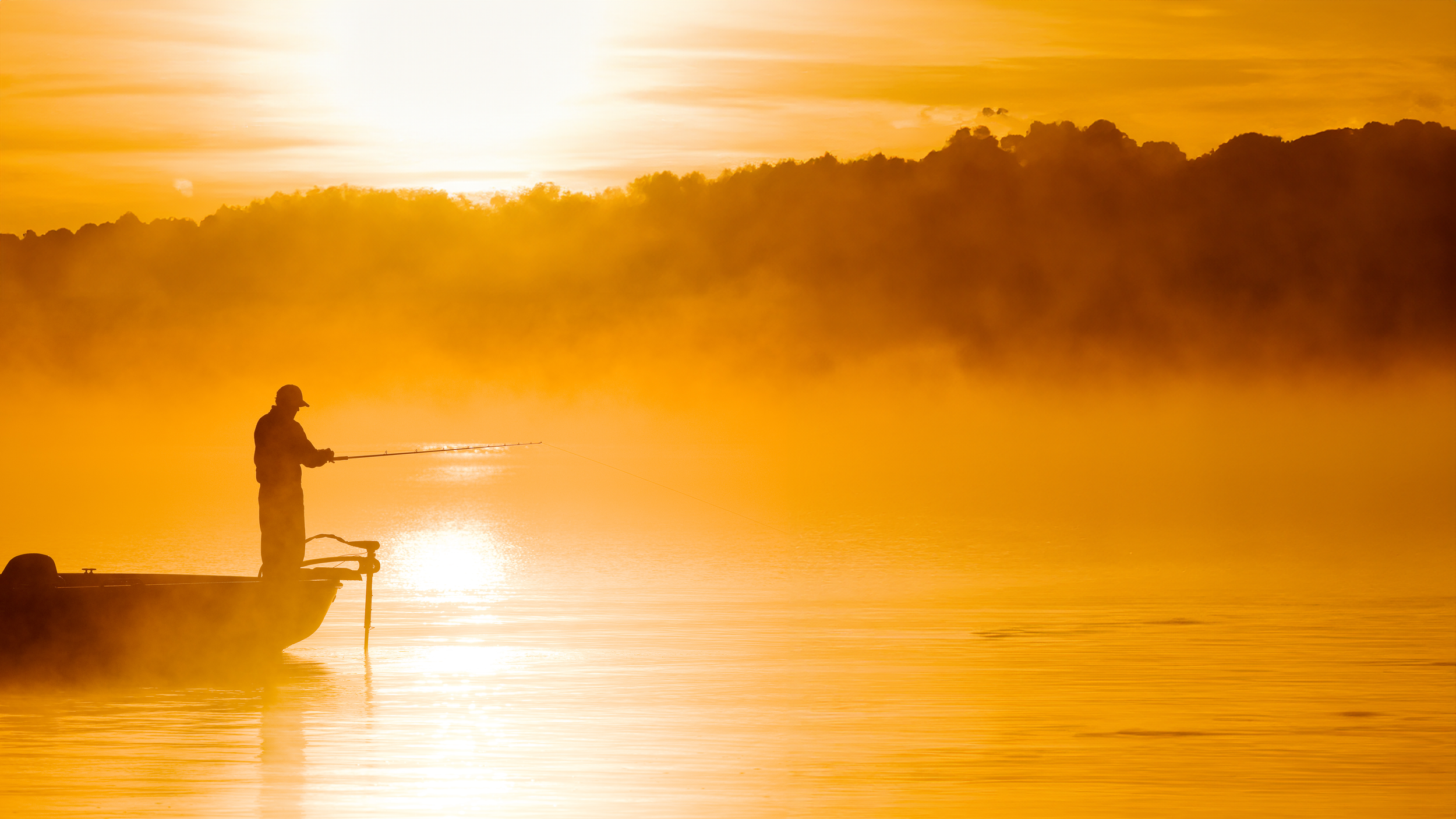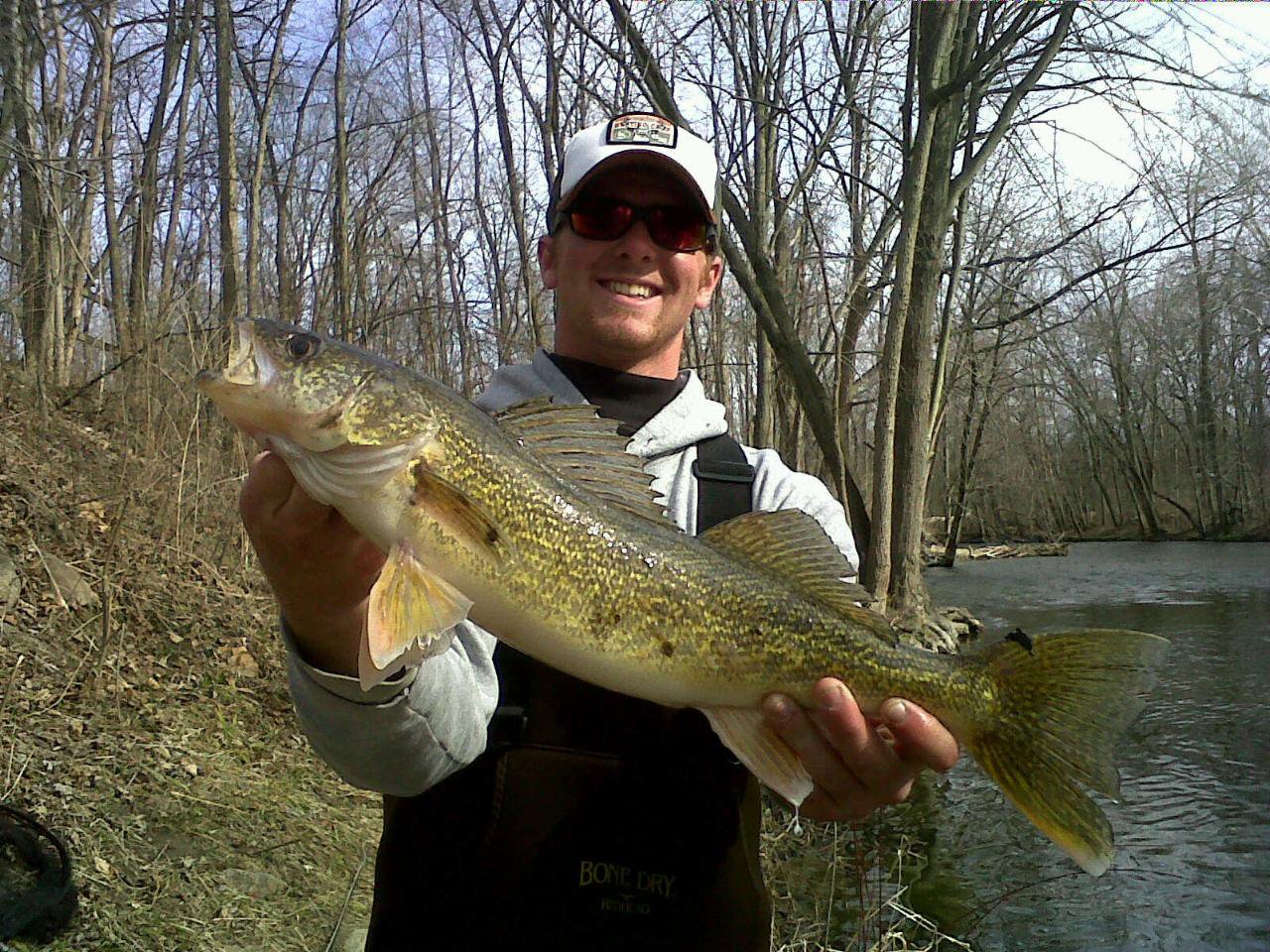
Fishing
The Clinton River, its tributaries, and Lake St. Clair provide excellent fishing opportunities for all types of anglers all season long.
For an interactive list of public fishing sites throughout the watershed click here.
For up-to-date fishing regulations, please click here.
To view Michigan’s 2025 Eat Safe Fish Guide, click here.
FISHING IN SOUTHEAST MICHIGAN
Southeast Michigan provides one of the most diverse fishing opportunities in the world. Whether you’re fishing in Lake St. Clair or on one of the hundreds of rivers or inland lakes, there are boundless opportunities to catch “The Big One.”
Southeast Michigan is renowned for abundant warmwater species such as Smallmouth Bass, Walleye, and Bluegill. Other fish that can be caught throughout the Clinton River Watershed include Musky, Perch, Pike, White Suckers, Catfish, Carp and assorted pan fish.
Michigan is one of the best places in North America to seek out coldwater game fish such as Salmon, Trout, and Charr, and areas of Southeast Michigan have self-sustaining trout populations. While Paint Creek receives annual stocking of Brown Trout, recent fish surveys show that natural reproduction is increasing.
-
Self-sustaining populations of the Native Brook Trout have been rediscovered in the heavily shaded streams and creeks that form the North Branch in Almont and Bruce Township. These conditions led the State to classify the North Branch and its tributaries above 32 Mile Road as designated coldwater trout streams.
The CRWC and Michigan DNR Fisheries are now monitoring and studying the coldwater quality and fish habitat to gain insight into how to restore other portions of the Clinton River Watershed that once supported wild Brook Trout populations.
-
The upper portions of the North Branch of the Clinton River have the potential to provide a rewarding day for anglers. Fish that can be caught in this tributary include Steelhead (Rainbow Trout), Bass, Carp, and assorted pan fish. Public access is limited, but Metroparks and state parks provide access points.
-
The only designated trout stream in Southeast Michigan, the avid trout fisherman should not overlook Paint Creek. Paint Creek is one of the greatest resources within our watershed and is managed annually for Brown Trout. The length of the stream from Lake Orion to the city of Rochester is a designated coldwater stream managed by the DNR, and angler access is unrivaled due to the Paint Creek Trail that parallels the river through most of its course.
As of 2011, five miles of Paint Creek became designated for gear restrictions. Gear-restricted waters are from the Gunn Road crossing in Oakland Township to the Tienken Rd. Crossing in Rochester Hills. For more information about the types of gear restrictions please visit the DNR website.
-
The Main Branch of the Clinton River above the historic Yates Cider Mill provides opportunities for anglers to catch a variety of fish including Brown Trout, White Suckers and a variety of pan fish.
-
A popular destination for local fishermen, the Main Branch of the Clinton River below Yates Dam runs from Rochester to Lake St. Clair and receives an impressive spring run of Steelhead (Rainbow Trout). Yates Park is a scenic roadside park owned by the City of Rochester Hills and provides public parking. Other gamefish of interest that can be caught in this section include Walleye, White Suckers, Bass, Pike and assorted pan fish.
-
Parks with fishing lakes include Addison Oaks, Groveland Oaks, Highland Oaks, Independence Oaks, Orion Oaks, and Rose Oaks. Independence Oaks-North’s Upper Bushman Lake is designated catch-and-release-only by the Michigan Department of Natural Resources.
-
Metroparks with rivers and lakes for fishing include Lake St. Clair Metropark, Stony Creek Metropark, and Wolcott Mill Metropark.
-
There are over 400 inland lakes in Oakland County alone which provide excellent lake fishing opportunities. Many of these lakes provide managed boat ramps for easy fishing access. There are plenty of places to target panfish, bass, pike, and walleye. Notable lakes that provide great catch rates include Maceday Lake, Graham Lakes, Stoney Creek Lake, Upper Bushman Lake, and Lake Orion.
-
With over 430 square miles of freshwater and 160 miles of shoreline, Lake St. Clair is a world-class fishery and boasts charter fishing for Sturgeon and Musky. In 2013, Bassmasters named it the number-one bass fishing lake in the world. Lake St. Clair provides excellent fishing opportunities for Walleye, Perch, Smallmouth Bass, Catfish, and panfish, as well as coldwater fish including varieties of Salmon and Trout.
THE IMPORTANCE OF COLDWATER TRIBUTARIES
Coldwater streams provide critical thermal refuges for coldwater fish, sustaining populations that would otherwise be unable to survive in warm waters during the hot summer months. True to their name, coldwater fish prefer cold, clean water. During the summer, they live in cold water patches in rivers or deep waters of lakes where temperatures are more comfortable. During the spring and fall months, the fish migrate into tributaries and shallower water to feed and spawn. To learn more about our local, coldwater tributaries, visit the Clinton River Coldwater Conservation Project page.
HEALTHY RIVER,
HEALTHY TROUT
Because Native Brook Trout populations are sensitive to pollution, acidity, and poor oxygen levels, they are often referred to as the “canary in the coal mine” and are good indicators of a healthy ecosystem and river. To learn more about what makes a river healthy, visit Keeping Freshwater Resources Healthy.

ARE FISH IN THE CLINTON SAFE TO EAT?
Fish consumption safety can vary by location and type of fish. To determine the safety of eating fish caught from local lakes, rivers, and streams, it's important to review current guidelines and advisories. The Michigan Department of Health and Human Services (MDHHS) publishes the Eat Safe Fish guide to help you find out if fish in the area are safe to consume.
FISH SPECIES
Michigan Department of Natural Resources fish surveys have confirmed the following species in the Clinton River and its watershed.
-
Banded Killifish
Black Bullhead
Black Crappie
Blackchin Shiner
Blacknose Dace
Bluegill
Bluntnose Minnow
Bowfin
Brook Silverside
Brook Stickleback
Brown Bullhead
Brown Trout
Central Mudminnow
Central Stoneroller
Channel Catfish
Common Carp
Common Shiner
Creek Chub
Emerald Shiner
Fantail Darter
Fathead Minnow
Freshwater Drum
Gizzard Shad
Golden Redhorse
Golden Shiner
Goldfish
Grass Pickerel
Green Sunfish
Greenside Darter
Horneyhead Chub
Hybrid Sunfish
Iowa Darter
Johnny Darter
Lake Chubsucker
Largemouth Bass
Least Darter
Logperch
Longear Sunfish
Longnose Gar
Mottled Sculpin
Northern Hog Sucker
Northern Madtom
Northern Pike
Northern Redbelly Dace
Pumpkinseed
Rainbow Darter
Rainbow Trout
River Chub
Rock Bass
Round Goby
Silver Lamprey
Silver Redhorse
Smallmouth Bass
Spotfin Shiner
Spottail Shiner
Spotted Sucker
Stonecat
Walleye
White Bass
White Crappie
White Perch
White Sucker
Yellow Bullhead
Yellow Perch
-
Alewife
American Brook Lamprey
Banded Killifish
Black Bullhead
Black Crappie
Blackchin Shiner
Blacknose Dace
Blacknose Shiner
Blackside Darter
Bluegill
Bluntnose Minnow
Bowfin
Brassy Minnow
Brindled Madtom
Brook Silverside
Brook Stickleback
Brook Trout
Brown Bullhead
Brown Trout
Central Mudminnow
Central Stoneroller
Channel Catfish
Common Carp
Common Shiner
Creek Chub
Emerald Shiner
Fantail Darter
Fathead Minnow
Freshwater Drum
Gizzard Shad
Golden Redhorse
Golden Shiner
Goldfish
Grass Pickerel
Green Sunfish
Greenside Darter
Horneyhead Chub
Hybrid Sunfish
Iowa Darter
Johnny Darter
Lake Chubsucker
Lake Herring
Lake Trout
Largemouth Bass
Least Darter
Logperch
Longear Sunfish
Longnose Gar
Mimic Shiner
Mottled Sculpin
Muskellunge
Northern Hog Sucker
Northern Madtom
Northern Pike
Northern Redbelly Dace
Pumpkinseed
Rainbow Darter
Rainbow Smelt
Rainbow Trout
Redear Sunfish
Redfin Shiner
River Chub
Rock Bass
Rosyface Shiner
Round Goby
Sand Shiner
Silver Lamprey
Silver Redhorse
Smallmouth Bass
Splake
Spotfin Shiner
Spottail Shiner
Spotted Sucker
Stonecat
Striped Shiner
Tadpole Madtom
Tiger Musky
Walleye
Warmouth
White Bass
White Crappie
White Sucker
Yellow Bullhead
Yellow Perch




